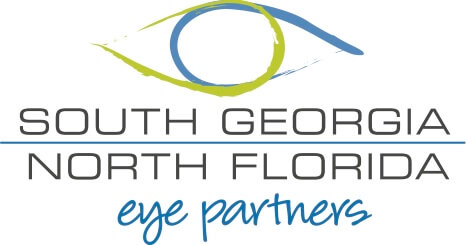Home » Blog » Tired of Struggling with Dry Eyes? Discover the Comfort You Deserve!
Tired of Struggling with Dry Eyes? Discover the Comfort You Deserve!
Posted by: South Georgia / North Florida Eye Partners in Eye Health

Dry eye disease occurs when your tears fail to lubricate your eyes properly. Insufficient tear production, resulting from various causes, can lead to discomfort. Tear instability results in inflammation, potentially damaging the eye’s surface. You might experience dry eyes during activities like prolonged computer use, or in conditions such as fall wind, smoke, or dry climates. The most reliable way to understand the root of your eye issues is through an accurate diagnosis by an eye doctor. We are committed to supporting your eye health and guiding you through the dry eye diagnosis process.
What Are The Methods Used To Diagnose Dry Eye?
Diagnosing dry eye disease starts with a thorough eye exam performed by your eye doctor. This exam includes examining your eyelids, the surface of your eyes, and your blinking habits to assess your eye health. Several tests can assist in diagnosing dry eyes, and your eye doctor will choose the most appropriate ones for your specific needs. Below are some of the common tests and procedures used to identify the cause of dry eyes:
- A test to assess your tear production. This test involves the Schirmer test, where blotting strips of paper are placed under your lower eyelids. After five minutes, the doctor checks how much of the strip is soaked with tears. Another method is the phenol red thread test, which uses a pH-sensitive dye-filled thread placed over the lower eyelid. It is wetted with tears for 15 seconds, and the amount of tears is measured based on the dye’s color change.
- Quality of your tears test. Other tests involve using special dyes in eyedrops to assess your eyes’ surface condition. Your doctor examines staining patterns on the corneas and times how long it takes for your tears to evaporate..
- A tear osmolarity test. This type of test measures the composition of particles and water in your tears. With dry eye disease, there will be less water in your eyes.
- Tear samples to look for markersof dry eye disease, including elevated matrix metalloproteinase-9 or decreased lactoferrin.
Does Dry Eye Resolve on Its Own?
Treating Dry Eye by Adding Tears
Artificial tears are a common treatment for dry eye disease. These drops, which imitate your natural tears, can offer substantial relief and help improve your eye comfort and health. Your eye doctor will recommend the best way to use them and suggest the most appropriate brand for your needs, helping to bring you relief.
Prevent Dry Eye by Preserving Tears
Your eye doctor might recommend a procedure to block your tear ducts, helping your eyes retain natural tears for a longer time. This involves placing small silicone or gel plugs, called punctal plugs, into your tear ducts. These plugs can be removed whenever necessary, making the treatment flexible and reversible. The procedure is usually safe, well-tolerated, and carries minimal risk of complications.
How To Prepare for Your Eye Doctor Appointment?
- List any symptoms you are experiencing, including any that may seem unrelated to the reason for your appointment.
- Include essential personal information, such as recent life changes and family eye health history.
- Write down all medications, vitamins, and supplements you are currently taking.
- Prepare a list of questions to ask your doctor.
What to Do in the Meantime Before Your Appointment
- If possible, avoid using a hairdryer. The hot air from a hairdryer can further dry out your eyes, exacerbating your dry eye symptoms.
- Stay away from high-heat rooms. Use a humidifier to add moisture to the air, especially since we’re entering the fall season and facing approaching winter weather.
- Protect your eyes from the drying wind by wearing sunglasses outside.
To soothe your symptoms while waiting for your appointment, use over-the-counter lubricating eyedrops (artificial tears) and steer clear of drops that claim to reduce redness. Those designed to decrease eye redness may lead to more irritation.
We’re here to help you keep your eyes healthy and comfortable. Your eye health is our top priority, and we are dedicated to giving you the best care and advice throughout your experience with dry eye disease.

